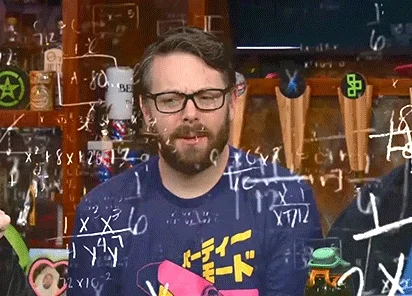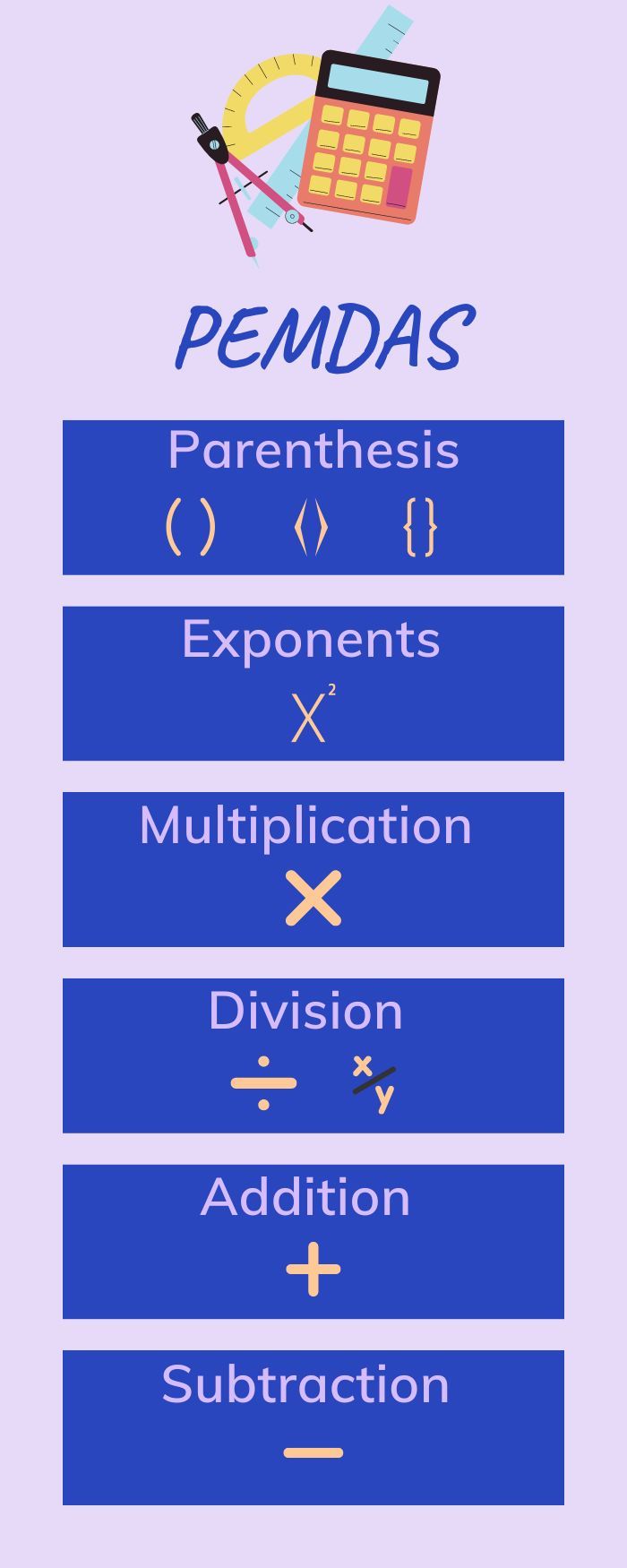
This logo isn't an ad or affiliate link. It's an organization that shares in our mission, and empowered the authors to share their insights in Byte form.
Rumie vets Bytes for compliance with our
Standards.
The organization is responsible for the completeness and reliability of the content.
Learn more
about how Rumie works with partners.

Have you ever had a difficult math problem and just didn't know where to start? When problems need more than one step to complete them, it can be unclear what to do first.
Using PEMDAS helps you know what operation to complete and in what order!
What is PEMDAS?
PEMDAS is a strategy to help you remember the order of operations when calculating a math problem.

To hear an accessible version of the image above, click play on the audio player below:
Using PEMDAS
Parentheses: Calculate all operations within parentheses first.
Exponents: Next, calculate or expand any exponents.
Multiplication & Division: Third, complete any multiplication and division, whichever comes first, working from left to right.
Addition & Subtraction: Last, calculate any addition or subtraction, whichever comes first, working from left to right.
Where do you start? 🤔
Consider this question:
Calculate 3 + 4 x 2
Option 1 ➕
If you add first and then multiply, you would have:
3+4 = 7 and then 7x2=14, with your answer being 14.
Option 2 ✖
If you multiply first and then add, you would have:
4x2=8 and then 3+8=11, with your answer being 11.

Which one is correct?
Remember, we use PEMDAS to determine which operation we complete first.
P: Ask yourself: "Does this problem have parentheses?" No.
E: Ask yourself: "Does this problem have exponents?" No.
MD: Ask yourself: "Does this problem have multiplication or division?" YES, therefore you complete the multiplication or division first (whichever comes first from left to right) and then the addition or subtraction.


The correct answer is 11 because we multiply before we add.
Remember, M comes before A in PEMDAS!
Explore another example 🤔
Consider this question:
Calculate 10 - 5 + 2
Option 1 ➖
If you subtract first and then add, you would have:
10-5 = 5 and then 5+2=7, with your answer being 7.
Option 2 ➕
If you add first and then subtract, you would have:
5+2=7 and then 10-7=3, with your answer being 3.

Which one is correct?
P: Ask yourself: "Does this problem have parenthesis?" No.
E: Ask yourself: "Does this problem have exponents?" No.
MD: Ask yourself: "Does this problem have multiplication or division?" No.
AS: Ask yourself: "Does this problem have addition or subtraction?" YES, therefore you complete the addition or subtraction first (whichever comes first from left to right).


The correct answer is 7 because AS is paired together.
While the A comes first in PEMDAS, subtraction is first in the expression as we move from left to right. Therefore, you need to subtract and then add.
Explore another example 🤔
Consider this question:
Calculate 1 + 3 x 6 ÷ 2
Option 1 ✖
If you multiply first, then divide, and then add you would have:
3x6 = 18, then 18÷2=9 and then 9+1=10, with your answer being 10.
Option 2 ➕
If you add first and then multiply and divide you would have:
1+3=4, then 4x6=24 and then 24÷2=12, with your answer being 12.

Which one is correct?
P: Ask yourself: "Does this problem have parenthesis?" No.
E: Ask yourself: "Does this problem have exponents?" No.
MD: Ask yourself: "Does this problem have multiplication or division?" YES, therefore you complete the multiplication and/or division first (whichever comes first from left to right) and then move to the next step.
AS: Ask yourself: "Does this problem have addition or subtraction?" YES, therefore you complete the addition or subtraction first (whichever comes first from left to right).


The correct answer is 10 because you complete the multiplication and division before your add.
Now you try! ⭐
Quiz
Calculatethis math problem using PEMDAS: 11 - 2 x 3 + 5 =
First multiply 2 x 3, to get 6. Then subtraction comes before addition when looking from left to right therefore 11 - 6 = 5. Finally, 5 + 5=10.
Take Action
 Photo by Enric Moreu on Unsplash
Photo by Enric Moreu on UnsplashWhen faced with a calculation that has more than one operation, use PEMDAS to help you remember which to complete first.
This Byte has been authored by
Theresa Dwulit
Learning Designer
M.Ed.